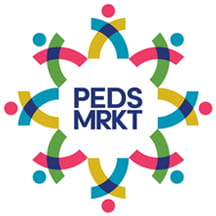In a recent CHA webinar, experts from digital health care leader AVIA Health gave an overview of generative artificial intelligence (AI) and its implications for children’s hospitals’ strategic roadmap.
Here are three key takeaways.
1. AI will enhance the workforce and patient care
Though health care is one of the leading industries in digital utilization, it lags behind others in labor productivity, according to McKinsey. Administrative waste accounts for 30% of hospital spending. AI can enhance labor productivity across departments in numerous ways. Some examples include optimizing staffing, scheduling, and resource planning; streamlining administrative tasks; and triaging patients. In patient care, AI already performs many useful functions and will perform more complex tasks as its capabilities rapidly expand.
2. The AI market is massive
Executive teams should have a grasp on the market to inform their strategies now and in the future. There are three main areas of the AI market to know:
- Big tech. Large companies like Oracle, Amazon, Microsoft, Google, and Epic play a critical role in AI platforms, solutions development, research, and more. Hospital leaders need to understand the nuances of their distinct strategies and roles.
- Digital solutions. There are hundreds of digital health care solutions in the market serving a range of hospital operations, from medical coding and recruiting to surgical robotics and analytics. Hospitals must be able to assess the efficacy and validity of AI in these products.
- IT infrastructure. The infrastructure stacks of tomorrow will be cloud-based platforms and computing spaces. Hospital leaders should strategize how to support new types of infrastructure.
3. Executives should start now
Hospitals mobilizing now are going to be months ahead as AI continues to evolve. Hospital leaders need to decide their level of involvement in AI, from wholly relying on market products to developing their own models internally.
Other actions hospital leaders should take now:
- Become versed in AI. Learn the nuances of artificial intelligence, which is a broad term encompassing different capabilities.
- Develop standard nomenclature. Determine how to refer to different subsets of AI and solutions across the organization.
- Train staff. Educate employees on using tools effectively and understanding AI as a tool to enhance work.
- Involve all executives. Embed AI in all C-suite strategies, not only chief information and data officers.
- Know the risks. Understand the potential effects of AI, especially as it relates to the pediatric population.
See what other hospitals are already doing with AI:
View the next webinar in the series to learn more: "AI Use in a Health Care Setting: Ethical, Regulatory, and Legal Considerations."


